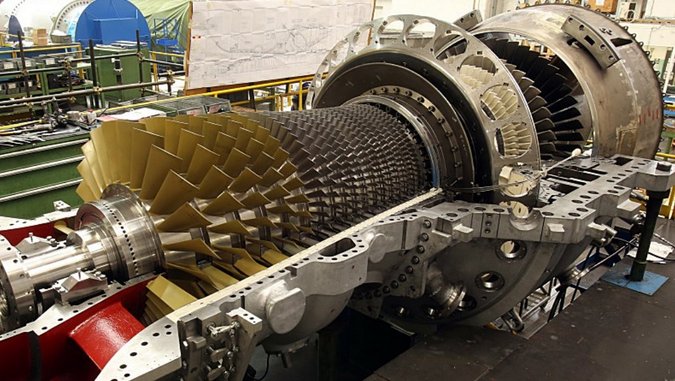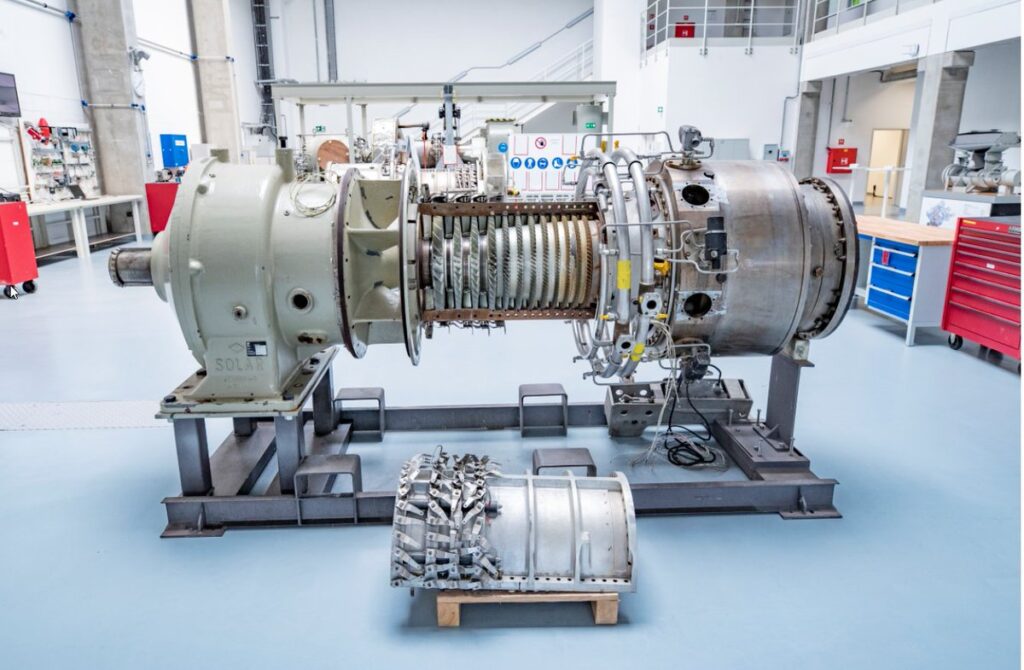MATERIALS BY COMPONENTS IN GAS TURBINES - TYPICAL

It is always recommended to refer to the specific edition of the API-616 standard and consult with gas turbine manufacturers for the most accurate and up-to-date information.
Here are the typical materials used for major components in gas turbines:
| Component | Typical Materials |
|---|---|
| Rotor | Nickel-based superalloys (e.g., Inconel, Waspaloy, Rene) |
| Blades and Vanes | Single-crystal or directionally solidified nickel-based superalloys |
| Combustor Liner | Heat-resistant stainless steel (e.g., ASTM A286) |
| Transition Pieces | Heat-resistant stainless steel or nickel-based superalloys |
| Casing | Carbon steel or stainless steel |
| Bolts and Fasteners | High-temperature alloys or stainless steel (e.g., Inconel, A286) |
| Shaft | Alloy steel or nickel-based superalloys (e.g., 4140, Inconel) |
| Bearings | Bearing shells: Babbitt-lined steel or nickel-based alloys; Thrust bearings: Carbon-graphite or bronze |
| Seals | Various materials including carbon, stainless steel, and elastomers, depending on the specific seal type |
Please note that these materials are general guidelines, and gas turbine designs and materials have evolved over time. For the most accurate and up-to-date information, it is essential to refer to the specific edition of the API-616 standard or consult with gas turbine manufacturers, as they can provide detailed material recommendations based on their specific turbine models and applications.
In addition to material selection, high reliability, safety, and performance in gas turbine operation and maintenance also depend on factors such as regular inspection, maintenance procedures, monitoring systems, and adherence to industry best practices. It is important to follow the recommended maintenance and inspection guidelines provided by the gas turbine manufacturer and comply with applicable industry standards and regulations.
LIMITATIONS IN ENGINEERING & DESIGN FOR MATERIALS IN MAIN COMPONENTS OF GAS TURBINES
Some of the key limitations and considerations include:
Temperature and Oxidation Resistance: Gas turbines operate at high temperatures, which can range from several hundred to over a thousand degrees Celsius. Materials must have excellent temperature resistance to maintain their mechanical properties and resist oxidation and hot corrosion.
Corrosion Resistance: Gas turbines may be exposed to corrosive environments, including corrosive gases (e.g., sulfur compounds, chlorides) and high-temperature oxidizing atmospheres. Materials must have good corrosion resistance to prevent degradation and ensure long-term reliability.
Fatigue and Creep Resistance: Gas turbines experience cyclic loading and long-term exposure to high temperatures, which can lead to fatigue and creep deformation. Materials with high fatigue and creep resistance are required to ensure long-term structural integrity and reliability.
Thermal Expansion and Thermal Cycling: Gas turbines undergo frequent thermal cycling due to startup and shutdown procedures. Materials should have a compatible coefficient of thermal expansion to minimize thermal stresses and potential cracking or distortion during thermal cycling.
High Strength and Stiffness: Gas turbine components must withstand high mechanical loads, including centrifugal forces, gas pressures, and rotor dynamics. Materials should possess high strength and stiffness to handle these loads and maintain dimensional stability under operational conditions.
Compatibility with Fuel and Combustion Byproducts: Gas turbines used in the oil & gas industry may encounter various fuels with different compositions and impurities. Materials must be compatible with the specific fuel and combustion byproducts to avoid corrosion, fouling, or erosion issues.
Erosion and Wear Resistance: In some gas turbine applications, erosion and wear can occur due to the presence of solid particles or abrasive contaminants in the gas stream. Materials with good erosion and wear resistance are necessary to minimize material loss and maintain component integrity.
Manufacturing and Fabrication Considerations: Material selection should also consider manufacturing and fabrication aspects, including ease of machining, weldability, and repairability. These factors can impact the quality, cost, and maintenance of gas turbine components.
Industry Standards and Codes: Compliance with industry standards, such as API-616 for gas turbines, ensures that materials meet specific requirements and have been validated for use in critical applications. These standards provide guidelines for material selection, manufacturing processes, and quality assurance.
It is essential to work closely with gas turbine manufacturers, consult relevant industry standards, and conduct thorough engineering assessments to select the most appropriate materials based on the specific operating conditions, criticality of the components, and desired performance criteria. Adhering to proper maintenance, inspection, and monitoring practices is also crucial to ensure the ongoing reliability, availability, and safety of gas turbine systems.
PROCEDURES, ACTIONS, STUDIES, ANALYSIS, MITIGATIONS, RECOMMENDATIONS ABOUT MATERIALS IN MAIN COMPONENTS IN GAS TURBINES
Define Performance Requirements: Clearly define the performance requirements for the gas turbine, considering factors such as power output, efficiency, operating conditions, and expected service life. This helps determine the necessary material properties and characteristics.
Material Selection Criteria: Establish material selection criteria based on the performance requirements, including temperature resistance, corrosion resistance, fatigue resistance, creep resistance, and compatibility with fuel and combustion byproducts.
Engineering Analysis: Conduct thorough engineering analyses to evaluate the mechanical and thermal loads on the gas turbine components. This includes finite element analysis (FEA) to assess stress distribution, thermal analysis to evaluate temperature gradients, and fluid dynamics analysis to study aerodynamic forces.
Material Testing and Evaluation: Perform materials testing and evaluation to assess the mechanical properties, corrosion resistance, and other relevant characteristics of candidate materials. This involves conducting tensile testing, impact testing, fatigue testing, and corrosion testing.
Corrosion and Compatibility Assessment: Evaluate the corrosion resistance and compatibility of materials with the specific fuel, combustion byproducts, and environmental conditions. This may include exposure testing, accelerated corrosion testing, or corrosion modeling to predict material performance.
Failure Modes and Effects Analysis (FMEA): Conduct FMEA to identify potential failure modes, their effects on gas turbine performance and safety, and the criticality of these failures. This analysis helps prioritize materials selection and design improvements to mitigate high-risk failure modes.
Supplier Evaluation and Quality Control: Ensure that materials are sourced from reputable suppliers and adhere to stringent quality control measures. Establish protocols for material inspection and verification of compliance with specifications and industry standards.
Manufacturing and Fabrication Considerations: Consider manufacturing and fabrication processes in the selection of materials. Evaluate factors such as ease of machining, weldability, repairability, and dimensional stability during manufacturing.
Maintenance and Inspection Planning: Develop a comprehensive maintenance and inspection plan that includes regular inspections of critical components, non-destructive testing (NDT), and preventive maintenance activities. This ensures early detection of potential material degradation or failure and enables timely corrective actions.
Documentation and Knowledge Management: Maintain accurate documentation of material selection, performance data, and maintenance history. This information serves as a knowledge base for future material selection, maintenance planning, and performance optimization.
It’s important to note that these procedures and actions should be carried out by qualified engineers and professionals with expertise in gas turbine design, materials selection, and relevant industry standards. Compliance with applicable regulations, industry standards (such as API-616), and the manufacturer’s guidelines is crucial to ensure the safety, reliability, and optimal performance of gas turbines.

